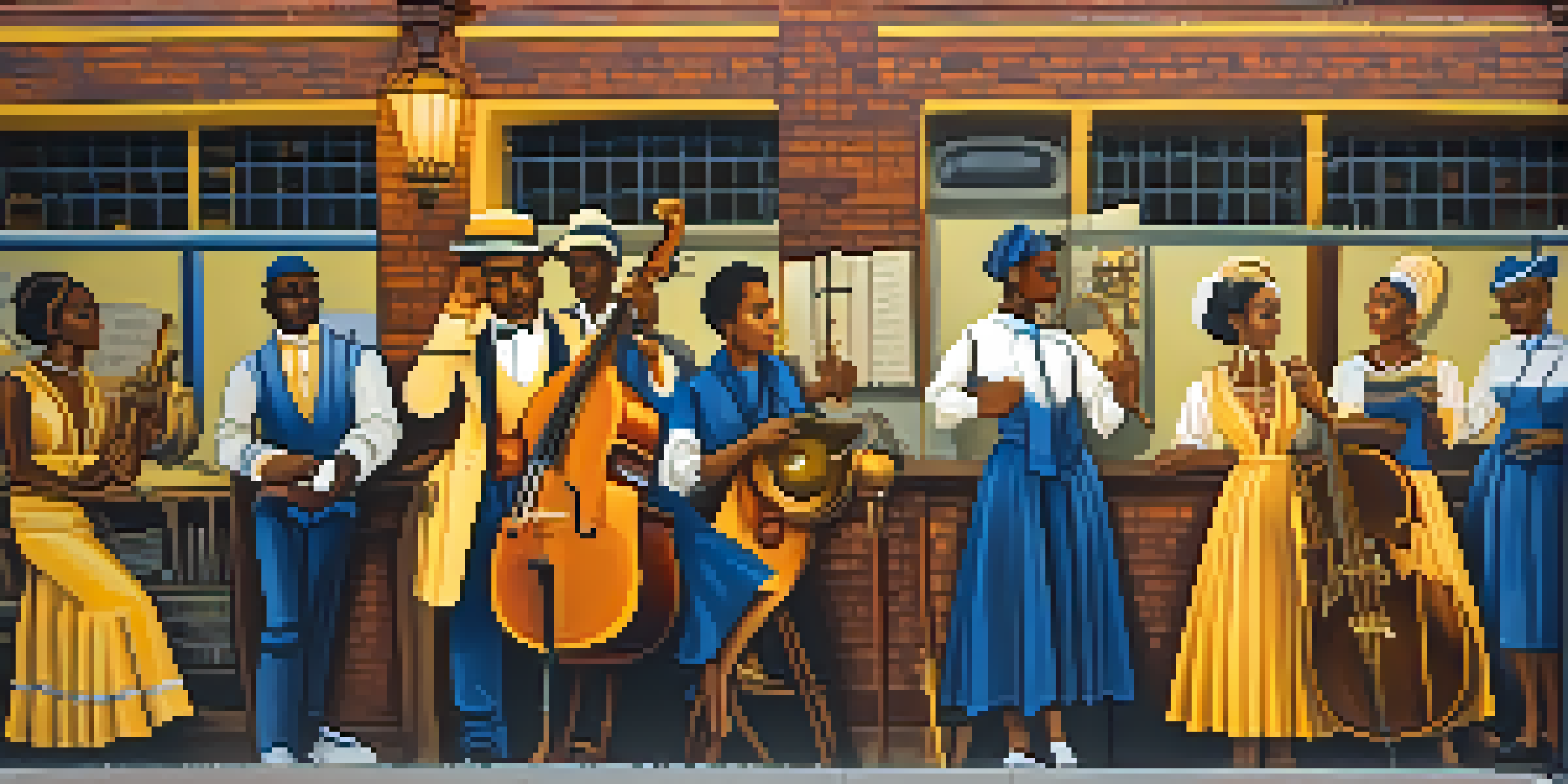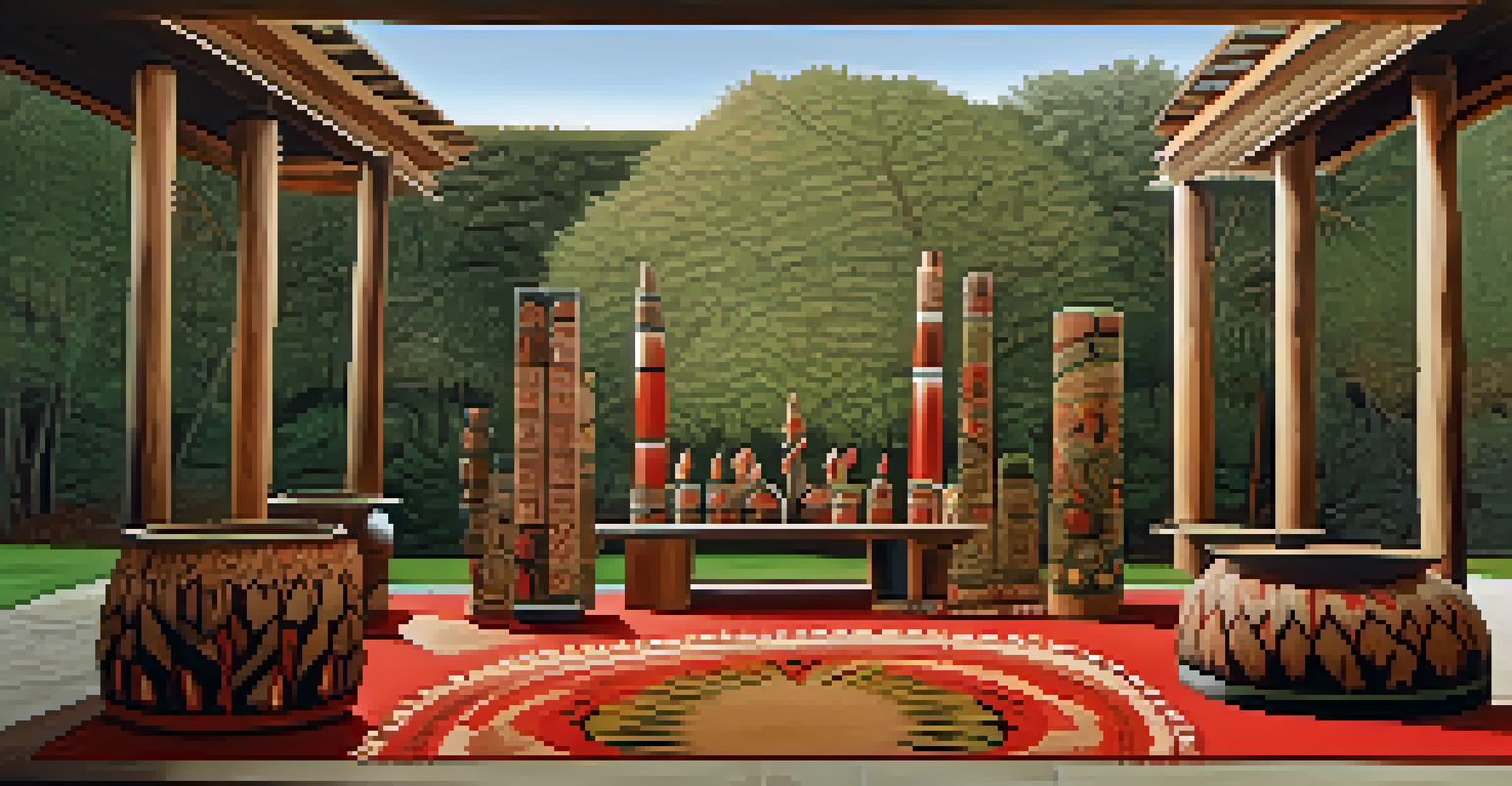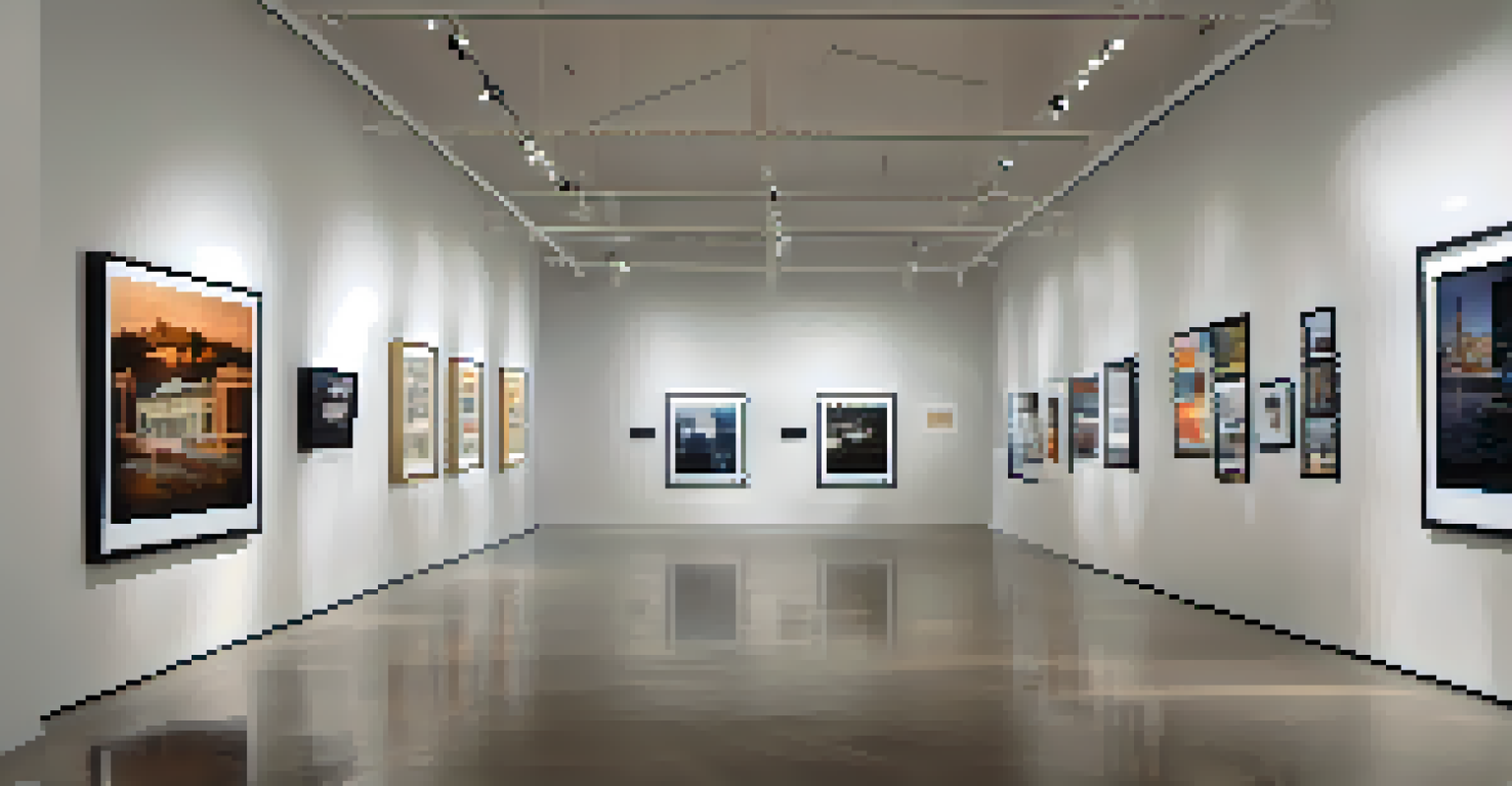How Collective Memory Shapes Cultural Identity Through Art

Understanding Collective Memory in Cultural Contexts
Collective memory is the shared pool of knowledge and information in the memories of a group. It helps shape the identity and values of a culture, influencing how communities remember their past. This memory is not just a collection of facts; it’s the emotional and social context that binds people together.
Art is the most beautiful of all lies.
Art plays a vital role in expressing and preserving collective memory, often serving as a visual narrative of historical events. Through paintings, sculptures, and performances, artists can evoke memories that resonate deeply within a community. For instance, murals in urban areas often commemorate local history and events, turning public spaces into collective memory banks.
By engaging with art, individuals can connect with their cultural heritage, fostering a sense of belonging and identity. This connection to the past can empower communities to navigate present challenges, illustrating the enduring impact of collective memory on cultural identity.
The Role of Art in Preserving Historical Narratives
Art serves as a powerful medium for preserving historical narratives that might otherwise be forgotten. Whether through literature, visual arts, or music, artists capture the essence of their times, allowing future generations to glimpse their ancestors' experiences. For example, the works of artists during the Harlem Renaissance celebrated African American culture and history, providing a rich tapestry of collective memory.

These artistic expressions often reflect the socio-political climate of their time, enabling audiences to understand the struggles and triumphs of their predecessors. By portraying historical events and themes, art becomes a vessel for collective memory, cementing the significance of heritage within cultural identity.
Art Preserves Collective Memory
Art serves as a powerful medium that captures and conveys the rich narratives of cultural history, ensuring that collective memory is preserved for future generations.
Moreover, as societies evolve, so do their interpretations of history. This dynamic relationship between art and collective memory ensures that cultural narratives remain relevant, allowing communities to redefine their identities based on their shared past.
Art as a Catalyst for Social Change and Memory
Art has the unique ability to provoke thought and inspire action, often serving as a catalyst for social change. Through evocative imagery and powerful storytelling, artists can challenge prevailing narratives and shine a light on overlooked histories. This is particularly evident in movements such as street art, where murals boldly address social injustices and reclaim public spaces.
The past is never dead. It's not even past.
For instance, the work of artists like Banksy often incorporates themes of memory and identity, prompting viewers to reflect on societal issues. By engaging with these artworks, communities can confront their collective memory, questioning how it shapes their cultural identity and future.
As such, art not only preserves memory but also reinterprets it, enabling cultural evolution. This transformative power highlights the importance of art in fostering a collective consciousness that embraces both history and progress.
Cultural Identity Through Traditional Art Forms
Traditional art forms are vital carriers of collective memory and cultural identity. They embody the stories, rituals, and beliefs of a community, often passed down through generations. Take, for example, Indigenous art, which frequently reflects the connection between the people and their land, serving as a reminder of their historical narratives.
These traditional practices not only preserve memory but also reinforce cultural identity, providing a sense of continuity in a rapidly changing world. Engaging with traditional art forms allows individuals to connect with their heritage, fostering pride and understanding of their cultural roots.
Art Fuels Social Change
Through thought-provoking imagery and storytelling, art can challenge societal norms and inspire communities to engage with their collective memory, leading to social change.
As globalization influences cultural exchanges, traditional art forms face the challenge of adaptation while retaining their essence. This delicate balance underscores the importance of art in ensuring that collective memory remains alive and relevant in shaping cultural identity.
Modern Art Movements and Collective Memory
Modern art movements often reflect and respond to collective memory, pushing boundaries and challenging conventions. Artists like Picasso and Frida Kahlo have explored themes of trauma and identity, capturing the complexities of human experience. Their works resonate deeply with audiences, as they evoke shared emotions and experiences tied to historical and cultural memories.
These modern expressions of collective memory can also facilitate dialogue about societal issues, encouraging viewers to engage with their own identities. For instance, contemporary installations that address topics such as war, displacement, and identity politics serve as poignant reminders of our shared past and its impact on the present.
By confronting these themes through art, communities can foster a deeper understanding of their collective memory, forging connections that transcend time and space. This exploration of modern art exemplifies how creativity can shape and redefine cultural identity.
The Impact of Digital Art on Collective Memory
In today's digital age, the landscape of art has shifted dramatically, offering new avenues for collective memory to be expressed and shared. Digital art forms, including social media, virtual reality, and multimedia installations, allow for greater accessibility and engagement. Artists can reach wider audiences, ensuring that cultural narratives resonate beyond geographical boundaries.
This democratization of art enables individuals to participate in the preservation and reinterpretation of collective memory. For instance, online platforms allow users to share personal stories and artworks, creating a rich tapestry of diverse experiences that contribute to cultural identity.
Digital Art Expands Cultural Reach
The rise of digital art forms enhances accessibility and participation, allowing diverse cultural narratives to be shared and reshaped across global platforms.
However, the rapid pace of digital consumption also raises questions about authenticity and the permanence of memory. As we navigate this evolving landscape, it’s essential to recognize the role of digital art in shaping our collective memory and cultural identity for future generations.
Conclusion: The Enduring Relationship Between Art and Identity
The interplay between collective memory and cultural identity through art is a dynamic and ongoing process. Art not only preserves historical narratives but also challenges and redefines them, creating a continuous dialogue between past and present. As communities engage with their collective memory, they strengthen their cultural identity, fostering a sense of belonging.
Art's ability to evoke emotion and provoke thought ensures that collective memory remains relevant, adapting to the changing landscapes of society. By celebrating diverse artistic expressions, we honor the rich tapestry of human experience that shapes our identities.

Ultimately, understanding how collective memory shapes cultural identity through art allows us to celebrate our shared histories while embracing the future. This journey through art serves as a reminder of the power of creativity in shaping who we are and how we connect with one another.